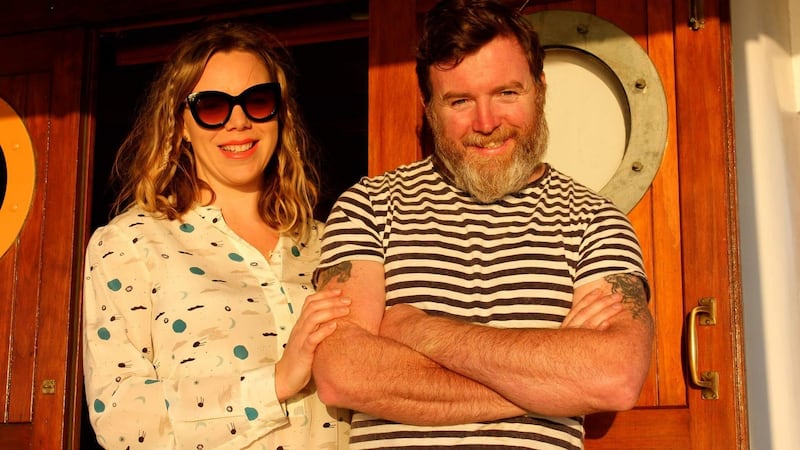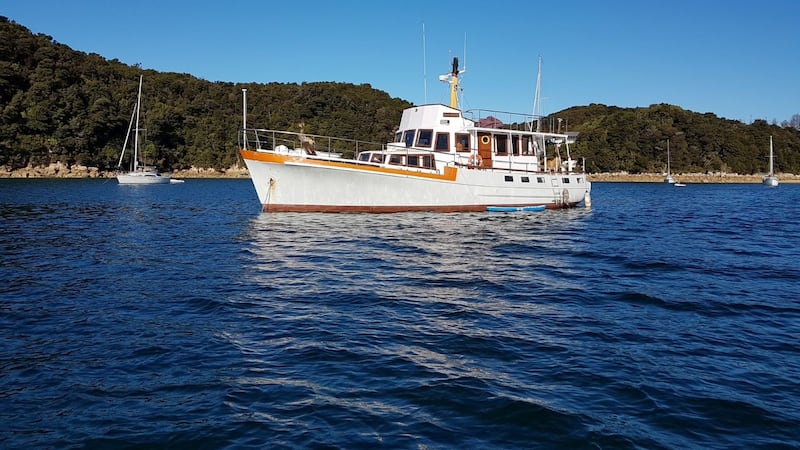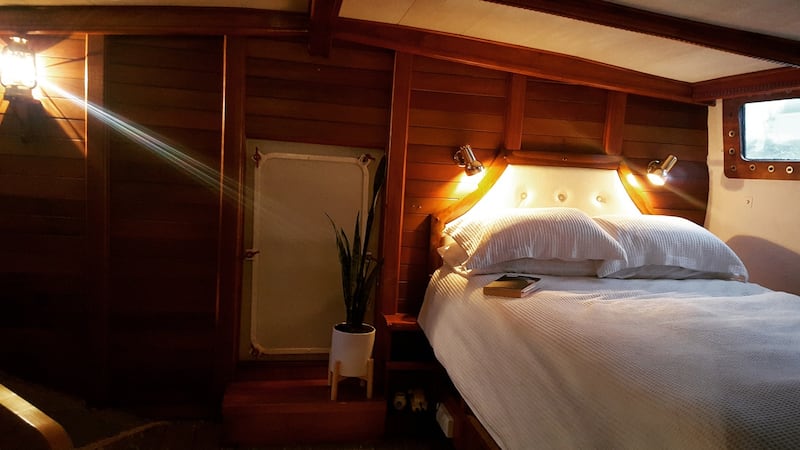Earlier this year my partner and I bought a 60ft motor launch to live on in Nelson Marina, New Zealand. It is a very scary, overwhelming but exciting project. Keith is from Coolock, Dublin, and I’m from Limerick. He arrived to New Zealand in March 2007 after exhausting his Australian visa and I arrived that June in search of snowy adventures. We experienced different lives in different areas of New Zealand until our paths crossed in Wellington in 2012.
After the usual courting, some city moves, life stuff and travel we decided to move to the South Island and set up in sunny Nelson so Keith could follow his marine life passion and study full-time. That was in February 2015 and he will finish his aquaculture and marine conservation degree in November this year. I work as an engineer with a fishing company, so our lives are quite “marine” .
It is quite a surreal feeling having your entire house with you. I kept joking with Keith that I had forgotten to pack something
We hit the rental market in Nelson, not a bad experience after overpriced and overcrowded Auckland. We scored a three-bedroom house with a large garden, sunny deck and fruit trees for NZ$385 (€243) a week and were happy there until the owners decided to sell. We found a new rental but we were always worried it might also be sold. This was becoming a frequent occurrence in Nelson as the Auckland property market was spilling into the provinces and a property “fever” was under way. No renter was safe.

While Keith and I were in a position to buy a property in Nelson, we did not want to get sucked in. Our friends were paying NZ$400,000 (€252,500) for 1960s houses in non-desirable areas. Houses were being snapped up in crazy auctions and rented out by Auckland investors. We decided to look outside the box; perhaps some rural land and a container or a cabin. As avid “boaties” we always kept an eye on the boat market and discussed upgrading to a 10m for holidays. Then we thought, why not go bigger and just live in it. We played with the idea for about six months and had looked at our current boat for a year before buying it.
Live-aboard status
We made offers on a couple of properties that fell through, leaving us with a cash deposit – 50 per cent of the boat’s price. We secured a personal loan for the rest, albeit with a hefty 14 per cent interest rate. The interest is the same amount as we would be paying on a house, except the loan will be paid off in five years and we will be living mortgage-free. We pay NZ$134 (€85) a week for our berth and live-aboard status. This includes power, water and use of the marina facilities and will be our only ongoing cost after the loan is paid off. We also have maintenance costs, but that’s another story.
There were velvet curtains, net curtains, frilly cushions, doilies, fake flowers, shag pile carpets and cat hair – everywhere
The boat is called Kai-Arahi, meaning "leader" or "guidance" in Maori and was built by a couple who had dreams of taking it far and wide. However, by the time they launched it in 2003, they were too old for their planned adventures and just used it as a home; it barely moved for 14 years. When we moved aboard they had left everything. They were hoarders and caught in the 1970s. There were velvet curtains, net curtains, frilly cushions, doilies, fake flowers, shag pile carpets and cat hair – everywhere.

We have made the place our own, but it still needs a lot of work. It needs a new galley, new flooring, paint and two new heads (bathrooms). But for now everything is functioning.
The boat is powered by two diesel Gardner engines – former truck engines in the UK – with a cruising speed of eight knots. Having two engines makes the vessel twin screw and easier to manoeuvre its 50T mass (yes, 50 tonnes). It has a diesel genset which gives us 240V power when needed offshore. There is capacity for 6,000 litres of fuel and 2,000 litres of fresh water. The engines use about 17 litres an hour between them, so going away for a weekend is very affordable. We have a water tank which is flushed by a salt water ballast, and a second tank. As a legal requirement you need to be at least 1km offshore to flush out your tanks. We do ours every couple of weeks.
The beauty of having a houseboat is that it is mobile
Prime real estate
There is one cabin that we plan to convert into a double bedroom; and we have a pantry, utility, galley/dining area, bridge/office and large saloon. The engine room is located under the bridge with a standing-room workshop. There is plenty of storage in the hull. Moving aft and downstairs is our main double cabin with en suite, twin cabins and another bathroom. We have a rear deck where we barbecue and a top deck for beanbags and beersies. It is prime real estate with a constant view of the water and hills, a 10-minute walk to the city centre, free parking and nice neighbours. Each berth is allowed three live-aboard boats.

We have just returned from a four-night trip in the Abel Tasman National Park, about 3.5 hours steaming away. The conditions were perfect and the trip was drama free. It is quite a surreal feeling having your entire house with you. I kept joking with Keith that I had forgotten to pack something. I was also able to do all the housework while steaming over and back, including the vacuuming. That will be our last trip until spring, as we need to get some renovations completed over winter. We have trips in the pipeline to D’Urville Island, Golden Bay, and we are planning on spending six weeks over Christmas cruising the Marlborough Sounds, all very accessible to Nelson Marina.
The beauty of having a houseboat is that it is mobile. If we decide to work in Wellington, Auckland or Christchurch we can just move the boat there to live. Who knows what the future holds. To keep tabs on our adventures, Kai-Arahi has its own Instagram page, thewatergypsies.









